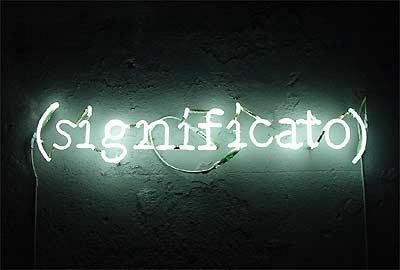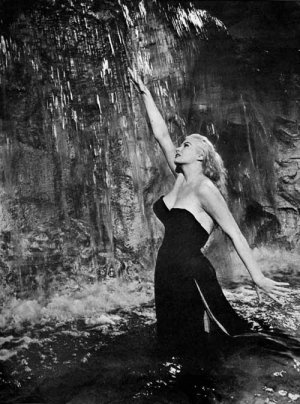How an Eight-Month Trip Shifted the Course of Art History
In the early ’50s, Robert Rauschenberg and Cy Twombly traveled together through Italy and Morocco, transforming more than just their own careers.
By Tom Delavan
NYT Oct. 11, 2018
WHEN ROBERT RAUSCHENBERG and Cy Twombly met in New York at the Art Students League in the spring of 1951, the two had an instant kinship. Both were transplants from the South: Rauschenberg from a Christian fundamentalist family in Port Arthur, Tex., Twombly the son of a former pitcher for the Chicago White Sox (from whom the artist, born Edwin Parker Twombly Jr., inherited both his name and his nickname), who had settled in the small town of Lexington, Va., after getting a job as the athletic director of Washington and Lee University. Rauschenberg had spent two semesters at Black Mountain College, the Bauhaus-inspired experimental art school in North Carolina where he studied under Josef Albers. He was on the verge of his first solo show in New York at the Betty Parsons Gallery, the dealer who represented Mark Rothko, Jackson Pollock and Clyfford Still, and he had recently married, at the age of 24, the painter Susan Weil, who enrolled with him for his first semester at Black Mountain.
But when Rauschenberg returned to school in the summer of 1951, it was with Twombly, not Weil. A few weeks later, his wife came to visit with their newborn child only to discover that he was having an affair with Twombly. Rauschenberg followed her back to New York to try to sort things out, but he soon returned to Twombly and Black Mountain. (Rauschenberg and Weil would divorce in 1952.)
Twombly and Rauschenberg’s relationship came at a crucial transitional period for both men. They were still finding their voices, not only in their work but in their lives as well. Rauschenberg’s career in particular has often been read in retrospect through his collaborations with romantic partners. His early endeavors with Weil — the husband and wife exposed blueprint paper to light in order to create drawings without having to make a physical mark — would prefigure the subsequent experiments that would define his work. His later relationship with Jasper Johns, from 1954 through the end of that decade, would lead to perhaps the most famous collaboration in the history of American art, as Johns and Rauschenberg gradually dismantled the conventions of painting, sculpture and everything in between, incorporating into their work abstraction, pop culture iconography and found objects.
But Rauschenberg’s work with Twombly remains the most unexplored of his partnerships. The two collaborated on many projects, including Rauschenberg’s “Night Blooming” paintings, on which the artists covered a canvas with tarry asphaltum paint, and then threw gravel on it, egged on, according to Fielding Dawson’s “The Black Mountain Book,” by their instructor Robert Motherwell. The richly textured surfaces of these black paintings contrast sharply with their next collaboration, Rauschenberg’s 1951 “White Paintings.” In this body of work, Rauschenberg went to the opposite extreme, asking first Twombly and then a series of other painters to cover canvases with white house paint, erasing any trace of texture or an artist’s hand: an erasure of Abstract Expressionism and the creation of a literal blank slate.
In January 1952, Twombly, 23, inquired about a traveling fellowship to Europe through the Virginia Museum of Fine Arts. In his application, he wrote that exposure to European art in context would “broaden my own knowledge and concepts, not only for the painting I intend to do there, but for a lifetime of work.” When he won the fellowship, he asked Rauschenberg to accompany him. In August of that year, the two set sail from New York for Palermo, Sicily. The eight-month trip that followed was a turning point, a period that would define both of their careers and, as a result, American art in the second half of the 20th century.
DOCKING IN PALERMO, the two men found a city still ravaged by the war. By early September, they were in Rome, installed at the Pensione Allegri overlooking the Piazza di Spagna.
For the first month of the trip, the two didn’t make much work apart from the photographs they took on their travels. These photos, taken with a Rolleiflex they shared, provide a record of their sightseeing, but also convey a surprising intimacy. In one, Twombly’s figure is dwarfed by a sculpture of Constantine the Great’s hand, a fragment of an enormous statue in the courtyard of the Musei Capitolini; another series of shots captures Twombly on the steps of a Roman basilica from the waist down, photographed successively closer till the last zooms in on his midsection.
While Twombly was fascinated with the grandeur of Rome’s past, Rauschenberg’s interests were more mundane, according to the art historian Nicholas Cullinan, now the director of the National Portrait Gallery in London, who pieced together the most detailed account of the trip in The Burlington Magazine a decade ago. Rauschenberg photographed graffiti on a crumbling wall and flea market wares like an old pair of shoes or bicycle parts, documenting the kind of quotidian objects that would later find their way into his work. Twombly began collecting Etruscan antiquities, and as the fellowship funds dwindled, Rauschenberg left for Casablanca to find work. It was in Northern Africa that he began collecting further bits of ephemera — twigs, feathers, rocks and bone that he would later assemble into what he called “Scatole Personali” (personal boxes) and “Feticci Personali” (personal fetishes). Twombly joined Rauschenberg a few weeks later, and by December, the pair had settled in Tangier. It turned out to be a fruitful detour: Twombly’s North African sketchbooks now look like a set of plans for his holistic symbolism, pages full of seemingly random symbols and scribbles that, seen together, charted a new territory for what painting could be, a kind of haphazardness that went beyond even the ostensible randomness of Abstract Expressionism.
Challenged to create work that could travel back to the States, Twombly created a series of wall hangings made from brightly colored fabrics. None of these works survive today, but in pictures of them, it is clear how Twombly is attempting to bring the drawings in his sketchbook to life on the wall. Rauschenberg’s work is messier, more chaotic, his “Scatole Personali” the detritus of a mind in the midst of thought, cluttered with photographs and arranged found objects from ram’s horns to pebbles. Later, in his career-defining “Combines,” which he began constructing in 1954, Rauschenberg would return to this kind of chaos; his works from his time with Twombly are a kind of disheveled, vibrant first draft.
According to Calvin Tomkins’s 1980 book “Off the Wall: Robert Rauschenberg and the Art World of Our Time,” when the “Scatole” were exhibited at L’Obelisco in Rome, in March of 1953, the show “was considered a joke by everyone, the gallery owner included. The objects were priced so low that several people bought them for laughs.” Days later, the “Scatole” and Twombly’s tapestries made in Tangier were shown in concurrent exhibitions in Florence at the Galleria d’Arte Contemporanea. None of the artists’ works sold. Today, only 13 of Rauschenberg’s “Scatole” survive.
Only in retrospect did their importance become clear. In 1955, Rauschenberg created “Bed,” one of his early “Combines.” In this work, Rauschenberg’s pillow, sheet and quilt are the canvas upon which he scribbled a Twombly-esque scrawl. In this sense, the work was very personal (like the “Scatole”), but in his willingness to deface his personal history, it also is the clearest representation of Rauschenberg’s work as a bridge between the emotional intensity of Abstract Expressionism and the cool detachment of Pop Art, a bridge he began building on his trip with Twombly. The trip was similarly transformational for Twombly. Not only would he reference Greek and Roman mythology in his work for decades, incorporating among his symbols the names of deities like Apollo and Venus, but he would also make Italy his primary home from 1957 until his death in 2011.
But if these months together have often been glossed over from an art historical perspective, it has been positively ignored from a queer one. Indeed, the men’s romantic relationship has been elided time and again: Both the Museum of Modern Art and the Metropolitan Museum of Art have faced criticism for not identifying the artists as gay in exhibitions, and for downplaying how their ***ual orientation may have influenced them. Both were gay at a time well before it was acceptable to be so publicly, and yet to this day, their identities as queer artists are frequently disregarded. Part of this was reflective of the age itself — there were no secret love letters between the two, no public acknowledgments of their romance. Rauschenberg’s ***uality was something of an open secret, known by everyone but never quite remarked upon, even by the artist himself. He never remarried, but for years, up until his death in 2008, he was in a relationship with the artist Darryl Pottorf, referred to in the artist’s obituary in The New York Times as his “companion.” Twombly, for his part, married the Italian artist Tatiana Franchetti, the sister of one of his patrons, in 1959 and remained married to her until her death in 2010.
BY THE MID-60S, Rauschenberg and Twombly’s paths had diverged. In 1966, Twombly, by then a famous artist, appeared in a Vogue story titled “Roman Classic Surprise.” The article was part of a series on interior design conceived by Diana Vreeland and shot by Horst P. Horst. Cullinan, who co-curated Twombly’s 2008 retrospective at the Tate, has argued that this article seriously compromised the artist’s career for a time: Twombly’s portrayal as a charmed expatriate with a wealthy wife in a woman’s magazine was not only at odds with America’s ideal of a macho artist but also with America’s idea of a hetero***ual male. This was the year adventurous bohemianism crossed over into the popular mainstream, when Ken Kesey and Bob Dylan influenced the male identity as presented by Madison Avenue admen. Twombly appeared an effete: anti-American and, worse, unmodern. Over the next decade, Twombly’s career languished — he had literally placed an ocean’s distance between himself and the American counterculture. Rauschenberg, meanwhile, was embraced by these same subcultures and raged against the Vietnam War. It would not be until the 1980s, and the resurgence of Expressionistic painting by a younger generation, that Twombly would be awarded his place in art history, a hero to and influence on Jean-Michel Basquiat, Julian Schnabel and Francesco Clemente, among many others.
Neither man ever talked much about their time together in the intervening years, though they remained friends. Were it not for their work, one can almost imagine their relationship had never happened. But there is a photograph of them from 1961, once again in Rome, almost a decade after their initial trip. Both are smiling and they look happy — but their gazes do not meet. There they are, together, looking in opposite directions, two different paths into the distance.


 My best wishes for this discussion that begins today.
My best wishes for this discussion that begins today.




